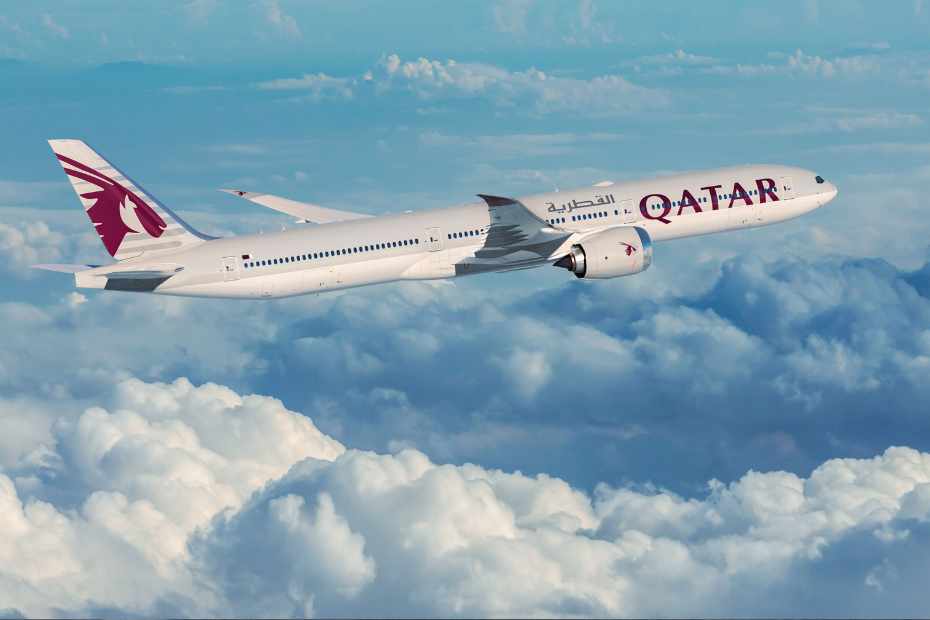The incredible reinvention of Ireland’s ‘awful’ tourist town
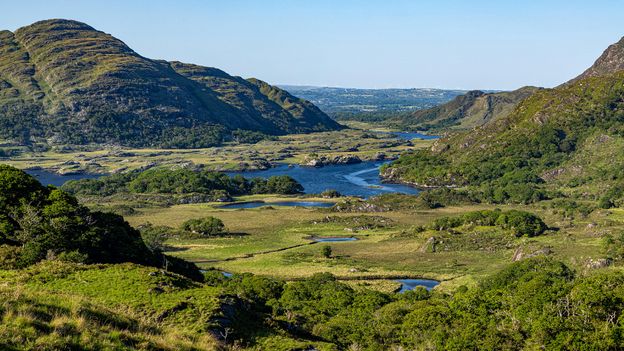
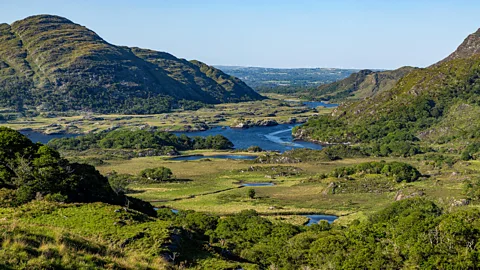 Getty Images
Getty ImagesBy the 1980s, Killarney had a name for all that was awful in mini-break getaways. But the Irish town has leaned into some brilliant green ideas – and the results are remarkable.
Located on the shores of Lough Leane and surrounded by rugged mountains and lush valleys, Killarney is one of the most beautiful spots in Ireland. It has stiff competition, however, as it is just one stop on The Wild Atlantic Way, the stunning 2,500km tourist trail tracing Ireland’s west coast that takes in some of the country’s most scenic landscapes.
The Wild Atlantic Way was launched a decade ago, but Killarney’s roots as a tourist town go back almost 300 years, to 1747, when Thomas Browne, the Viscount Kenmare, came of age. Travelling to the Killarney estates he had just inherited in Ireland’s far south-west, he discovered barren, boggy wastes and a great deal of debt.
Yet he saw tourism potential in the islands that dot Killarney’s three lakes and the beauty of Muckross Abbey and Ross Castle – dating to the 14th and 15th Centuries, respectively – and organised the planting of trees, draining of bogs and mending of roads. Inns were built. The coming of the railway in 1853 and Queen Victoria’s 1861 visit sealed the deal. Killarney was officially a tourist hot spot, its reputation for its natural beauty extending far beyond Ireland’s shores.
But had the visionary Viscount been able to see the future, might he have left the bogs soggy?
 Gemma Tipton
Gemma TiptonIn 1895, Thomas Cook launched the first organised tours here. Over the following century, things took a sharp turn for the worse. Hotels proliferated, roads became clogged and suburbs spread. On a weekend night at any time from the 1980s onward, you were more likely to be marauded by stag and hen parties than transported by nature. Some visitors never left the manicured golf resorts, while in town, tin whistle and fiddle music piped from tannoys outside shops selling plastic shamrocks and souvenirs made continents away. Killarney got a name for all that was awful in mini break getaways. The tacky town had turned its back on its glorious scenery, and many dismissed the place as too far gone to care about.
GREEN GETAWAYS
Green Getaways is a BBC Travel series that helps travellers experience a greener, cleaner approach to getting out and seeing the world.
But a core group of locals were not about to give up on their home‘s natural beauty. Over the past few years, thanks to tenacity, vision and a huge community effort, Killarney has managed to reinvent itself by leaning into some brilliant green ideas – and the results are remarkable.
When I recently visited, I realised that getting to Killarney can be sustainable in itself. The train station is in the centre of town so it is quite possible to travel without flying or driving; and while once upon a time the UK and Ireland‘s smaller towns were connected by rail, Killarney is one of the outliers in keeping its tracks.
My first stop was Luna cafe, where I happily sipped on coffee in the afternoon sun. I soon overheard some Americans debating the pleasures of one of Killarney‘s most clichéd attractions, a horse-drawn jaunting. Around me was a mix of accents, including plenty from the corners of Ireland. Most were remarking on the surrounding beauty, many were planning their next adventure, and some were getting their coffees to-go. But what they weren‘t getting was a cardboard cup.
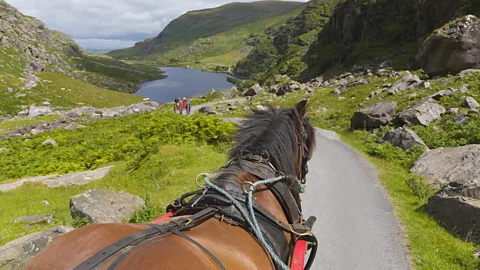 Getty Images
Getty ImagesLast year, Killarney hit the headlines by becoming the first town in Ireland to ban single-use coffee cups in an opt-in scheme, saving, according to Louise Byrne, a sustainability manager and one of the scheme‘s pioneers, more than one million cups a year. Byrne says that the idea came from noticing the sheer numbers of cups littering the area, including in the surrounding Killarney National Park, a Unesco Biosphere Reserve. Even if they are recycled, she notes, recycling itself uses energy, adding that “in Ireland there are more than 200 million single-use cups used annually that are generally not recycled or composted”.
HOW TO VISIT
Trains run from Dublin Heuston Station to Killarney every two hours and there‘s also a regular direct service from Cork.
When to go: Killarney is a treat in all seasons. Summer is blissful, but just bring extra layers for winter adventures, which makes cosying up in a local bar after all the tastier.
Visitors are encouraged to bring their own reusable cups, or they can, for a €2 deposit, get an Irish-made one to be returned at any participating business or kept for future use. Participating businesses, and there are now more than 70 of them, according to Byrne, quite simply no longer stock single-use cups.
In addition, 22 hotels have signed up to the Killarney Hotels Sustainability Charter, committing to removing single-use items as well as reducing their carbon footprint, cutting down on food waste and working with local and sustainable suppliers.
One of the reasons these initiatives have worked in Killarney is the presence of networks underpinned by the idea of “meitheal”, a Gaelic word that translates as “cooperative neighbourhood work group“. In the past, meitheals would have helped one another with the harvest and on building projects, and while the idea has died out in some parts of Ireland, it is still alive and well in Killarney, which is small enough for locals to feel seen and heard in their efforts.
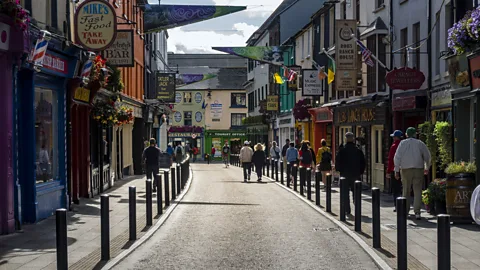 Getty Images
Getty ImagesThe Killarney Mountain Meitheal was set up 10 years ago by local sustainability pioneer Johnny McGuire, and along with another strong community group, the Tidy Towns, they collaborate with the town council on everything from clearing the invasive purple rhododendron ponticum to repainting street furniture.
Walking guide and Mountain Meitheal member Maureen Hegarty says that when some of her tour groups see teams out cleaning up the streets or painting kerbs and street furniture they think they must be offenders performing community service. She says she laughs as she explains to them how people do things differently in Killarney. Many, she adds, are impressed enough to want to bring the ideas home.
“It just takes two or three people with a vision to get things going,” she said. “It’s all about changing your mindset, so now we all see the value of working together.”
WHAT TO DO
Where to eat: Chefs at The Tan Yard and Café du Parc source their herbs and microgreens from the Killarney Urban Farm, as does atmospheric cocktail bar Pig‘s Lane. Local sustainability pioneer Johnny McGuire‘s Bricín has a full vegan menu alongside easy-eating classics like Irish boxty, above a charming craft shop.
The town may be clean and freshly painted, but it still has its architectural eyesores. I was trying to ignore the squat CinemaKillarney building in the centre of town when my eye was drawn by an unexpected riot of herbs and edible flowers across the road. An urban farm has been installed in the space left vacant by the closure of the basement nightclub of The Ross Hotel.
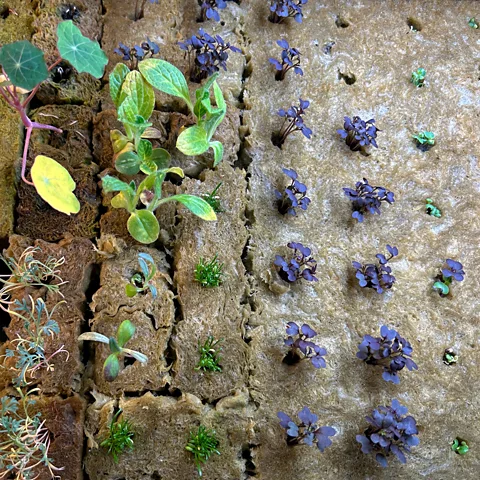 Gemma Tipton
Gemma TiptonGemma Ring, managing director of the O‘Donoghue Ring Collection, which includes The Ross Hotel and the Urban Farm, showed me around. Hydroponic towers use LED lights and water circulation systems to grow herbs and microgreens in a chemical-free environment for local hotels and restaurants. As we chatted, chefs wandered by, snipping off pea shoots and sage leaves as they passed.
“It’s just one element of what we are doing,” Ring said, explaining how her team are working with local suppliers to develop fertilisers, spa products and cleaning products from food waste, such as fruit peelings and coffee grounds.
We paused to imagine what it would be like if shuttered high-street shops in other towns and cities around the world could be similarly transformed.
Alongside the sustainability projects, a great deal of work has gone into re-forging the town‘s connections with the adjacent national park. In this, the pandemic has helped, as travel restrictions meant that locals rediscovered what was on their doorstep and then spread the word as things opened up.
I headed out into the park with Eamonn Meskell of the National Parks and Wildlife Service. Created in 1932, the Killarney National Park was the first in Ireland and encompasses more than 25,000 acres of lakes, ancient forests, fertile valleys, the ruins of pre-Famine settlements and Ireland‘s highest mountain range: the magnificent McGillycuddy‘s Reeks. It also plays host to a wealth of endangered flora and fauna.
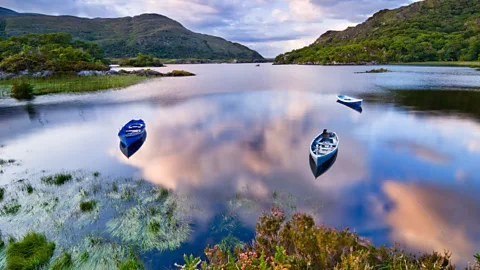 Getty Images
Getty Images“Now we are in a really infatuating part of the park,” said Meskell, in a gentle understatement, as we followed the Old Kenmare Road, part of a 16km hike from the Torc Waterfall to neighbouring town of Kenmare. “You can always get the bus back,” he suggested helpfully.
Old native oaks were clustered with rare epiphytes and skylarks darted about. We met a group of international volunteers planting sessile oaks, grown from locally gathered acorns in projects involving nearby schools. There was exciting news about the fledging of a new white-tailed eagle, part of an ongoing reintroduction programme that also includes ospreys and red kites. Later, we dipped down into an ancient yew wood, the largest in Western Europe, and came upon a small herd of native red deer.
As the sun set over the lakes, I thought back to a trip I made to this area some years ago when it was cluttered with litter, and reflected on the fragile balance that exists between tourism, commerce and the environment. It is tempting to think that our own actions are just a small drop in an increasingly polluted ocean, but then I thought of the acorns and realised that there is a great deal to be said for not giving up on the idea of starting small.
Related
Turkish Airlines and Qatar Airways Suspend Mogadishu Flights Following US…
Home » Airlines News of Qatar » Turkish Airlines and Qatar Airways Suspend Mogadishu Flights Following US Embassy Terror Alert, Raising Security Concerns at
Local tourism destinations grow fast
Men sit at the Doha Corniche backdropped by high buildings in Doha on March 3, 2025. Photo by KARIM JAAFAR / AFP DOHA: Local tourism destinations are g
Hajj, Umrah service: Qatar Airways introduces off-airport check-in for pilgrims
Image credit: Supplied Qatar Airways has introduced an off-airport check-in
IAG, Qatar Airways, Riyadh Air, Turkish Airlines, Lufthansa & more…
Turkish Airlines – a Corporate Partner of the FTE Digital, Innovation & Startup Hub – is charting a course to rank among the top 3 global airlines for



